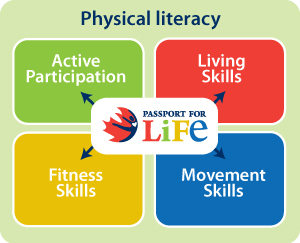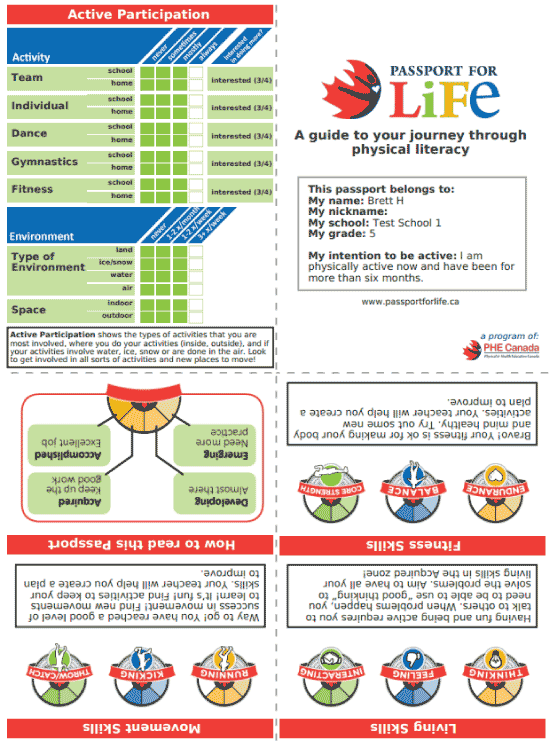Passport for Life has been designed to be applicable to all provincial and territorial curricula across Canada. Register for Passport for Life for more information about how Passport for Life links to the curriculum in your jurisdiction.
Passport for Life supports the awareness, assessment, development and advancement of physical literacy among students and teachers. The four components of physical literacy that are assessed in Passport for Life are Active Participation, Living Skills, Fitness Skills and Movement Skills.

Passport for Life combines student responses to online questionnaires with student data resulting from their participation in fitness and movement skill tasks that teachers administer and observe.
Based on the results of the physical literacy assessments, the Passport for Life website generates a Student Passport and a Class Passport. These passports highlight gaps in students’ physical literacy levels and support teachers in adapting their programming and instruction to provide targeted lessons that are relevant at both the class and student- levels. The passport results are user-friendly for teachers, parents and students and offer these target groups a platform to engage in meaningful conversation about student physical literacy assessment outcomes to support future improvements. Passport for Life provides a cumulative record of student assessments across multiple years.
Online Platform
Passport for Life uses an online platform to present and manage student physical literacy information.
This online platform will allow teachers to:
- input and manage the data for each of their students and classes in the program;
- connect to the health and physical education programs of study in their jurisdiction;
- access and download comprehensive support materials:
- tools, guidelines, instructional strategies, video examples and record-keeping forms for completing the assessments;
- guides to interpret and use the results; and
- ideas and resources to provide individualized attention and information to help students set goals and work towards continued improvement of physical literacy.

